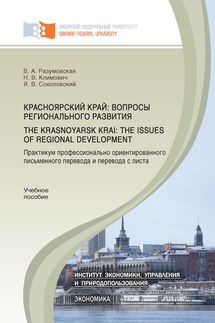Переводим тексты по экономике = Translating Economy - страница 12
This strategy delivers results in the following situations:
i) When the size of the market is large and it is a growing market.
ii) When customer loyalty is not high customers have been buying the existing brands more because of habit rather than any specific preferences for it.
iii) When the market is characterized by intensive competition.
iv) When the firm uses it as an entry strategy.
v) Where price-quality association is weak.
3) Differential Pricing Strategies: this strategy involves a firm differentiating its price across different market segments. The assumption in this strategy is that different market segments do not communicate or have different search costs and value perceptions of the product. In other words heterogeneity in the market motivates a firm to adopt this strategy.
4) Geographic Pricing Strategies: this strategy seeks to exploit economies of scale by pricing the product below the competitor’s in one market and adopting a penetration strategy in the other. The former is termed as second market discounting. This second market discounting is a part of the differential pricing strategy where the firm either dumps or sells below its cost in the market to utilize its existing surplus capacity. So, in geographic pricing strategy, a firm may charge a premium in one market, penetration price in another market and a discounted price in the third.
5) Product Line Pricing Strategies: these are a set of price strategies, which a multi-product firm can usefully adopt. An important fact to be noted is that these products have to be related, in other words belonging to the same product family. Faced with multi-products and fluctuating demand, the firm may adopt a combination of the following strategies to effectively manage its product line or maximize its profits across the product line.
i) Price Bundling: this strategy is used by a firm to even out the demand for its product. This is useful strategy for perishable; time-bound products like food, hotel room or a seat on a flight and for products cannot be substituted, like the package of stereo music system. Off-season discounts and, season tickets for music festivals are examples of price bundling strategy. This is a passive strategy aimed at correctly bundling the prices of related items so that the firm is able to maximize its profits.
ii) Premium Pricing: this strategy is used by a firm that has heterogeneity of demand for substitute products with joint economies of scale. Consider the example of a colour television set. There are different models available with different features, like the one with a remote control and another without it. Both are substitutable and satisfy the customer needs. But the firm may opt to premium price the first model and position it as the top of the product line for high income or upper income group of customers or for whom communicating that “they have arrived” is important.
iii) Image Pricing: this strategy is used when consumers infer quality from the prices of substitute models or competing products. The firm varies its prices over different brands of the same product line. This strategy is commonly used in textiles, cosmetics, toilet soaps and perfumes.
iv) Complementary Pricing: this strategy is used by a firm that has customers with high transaction costs for one or more of its products. Transaction costs are all those costs that a customer has to incur to buy the product, like the registration fees that a flat buyer has to pay in order to be a legal owner or the processing fees that the bank may charge to give a credit card to the customer.







